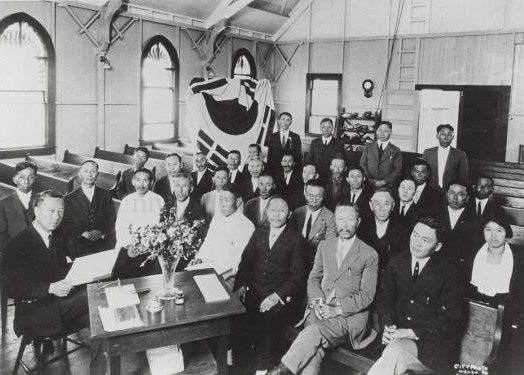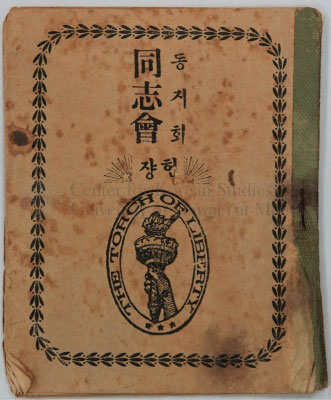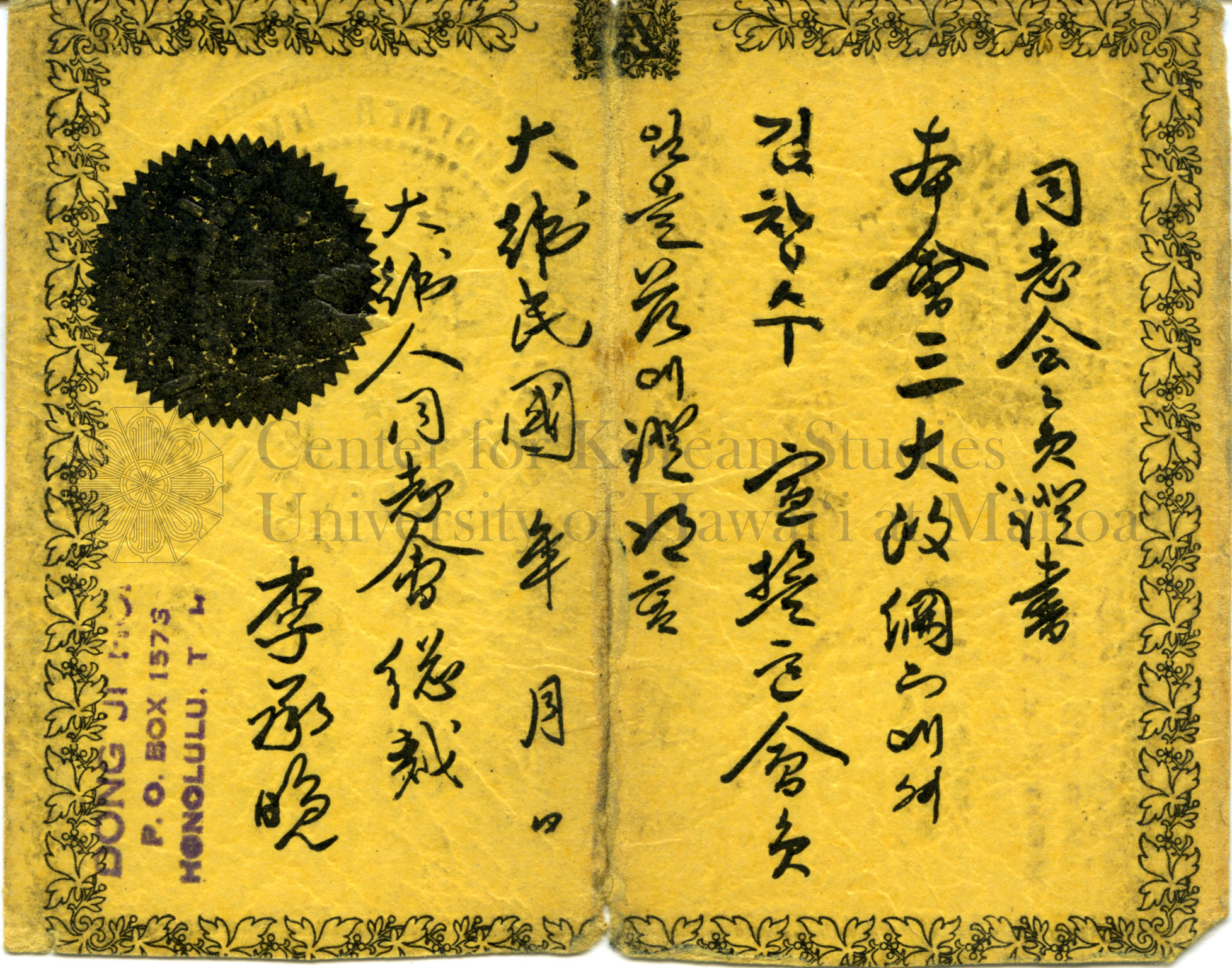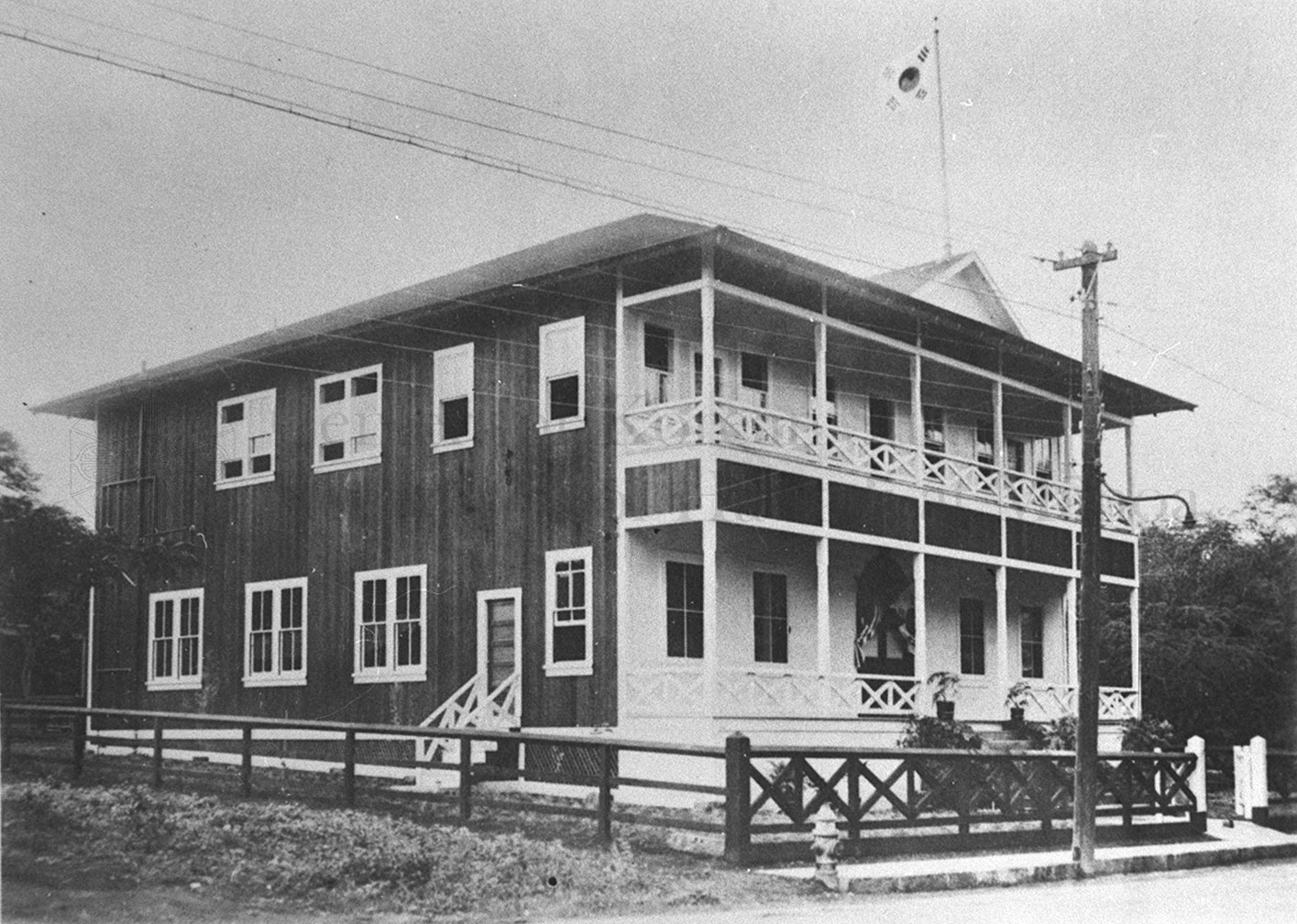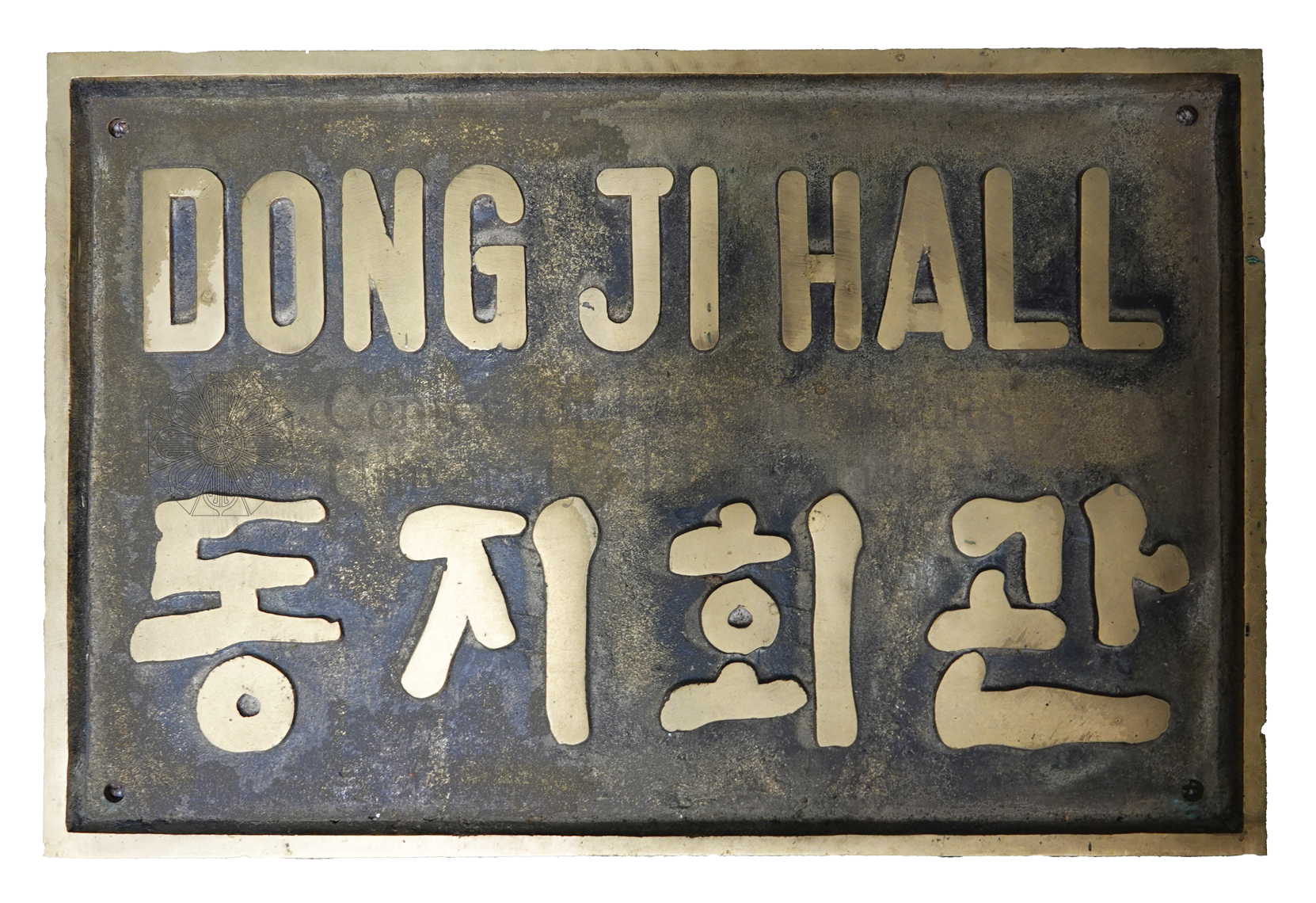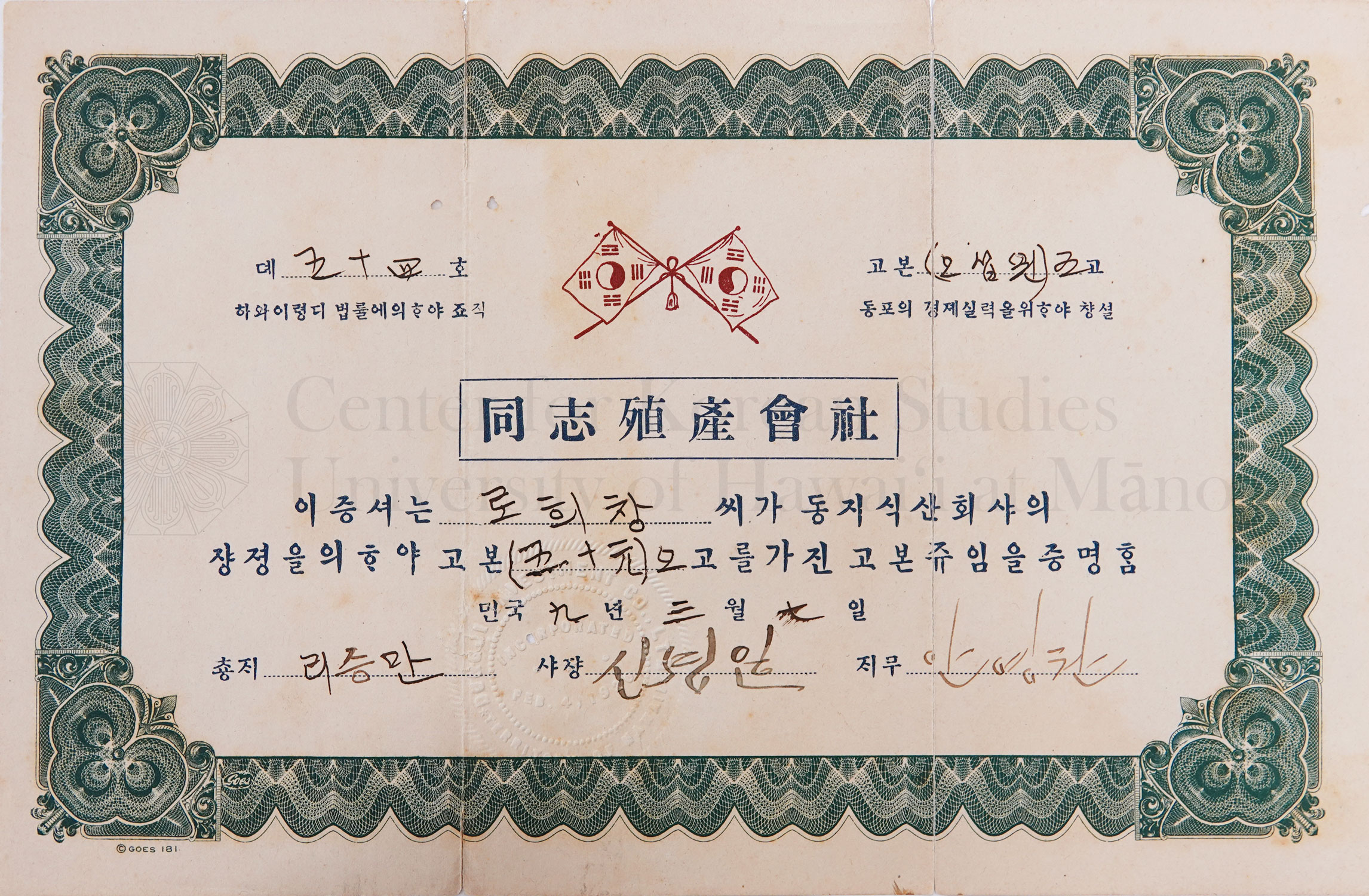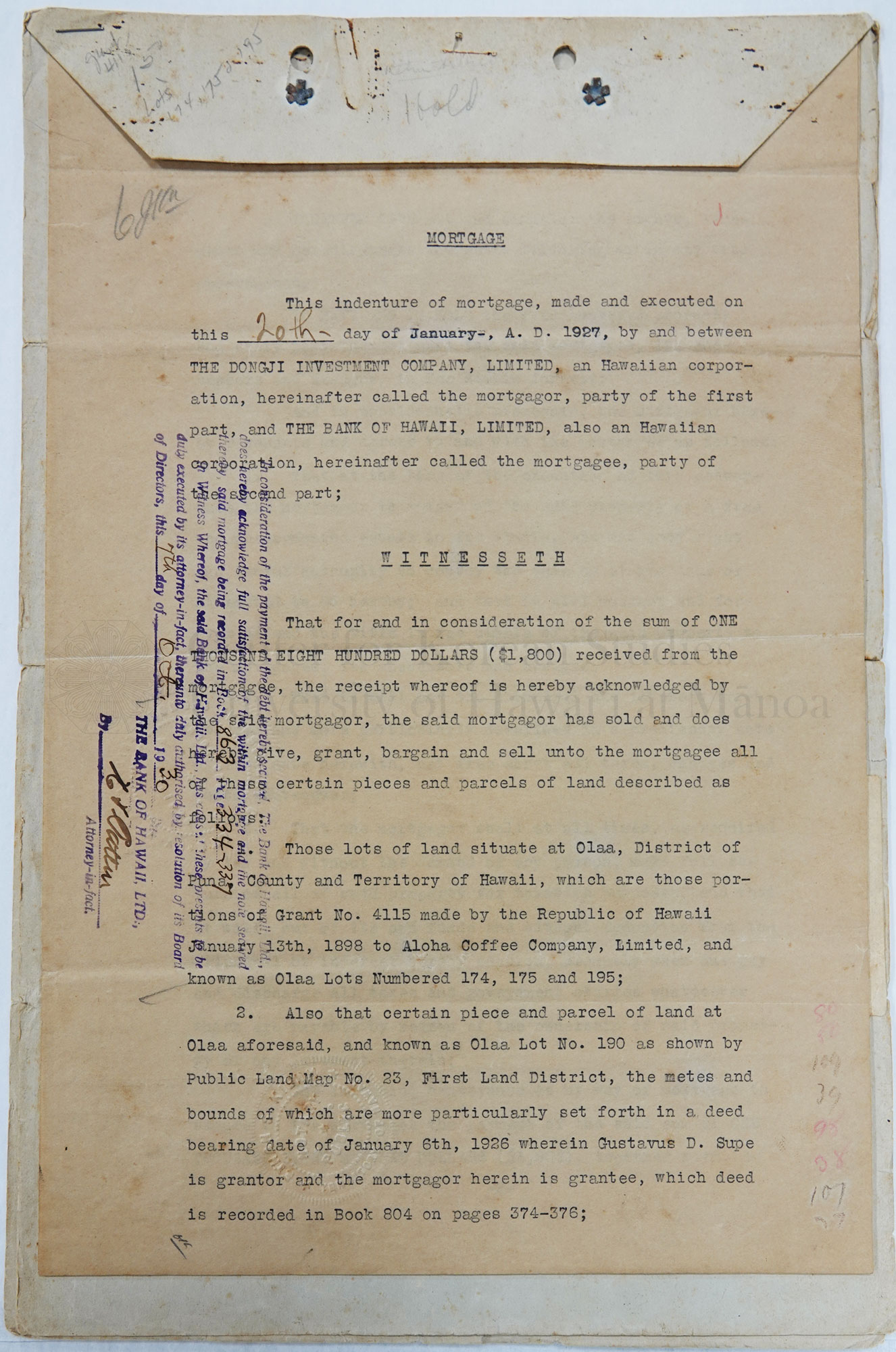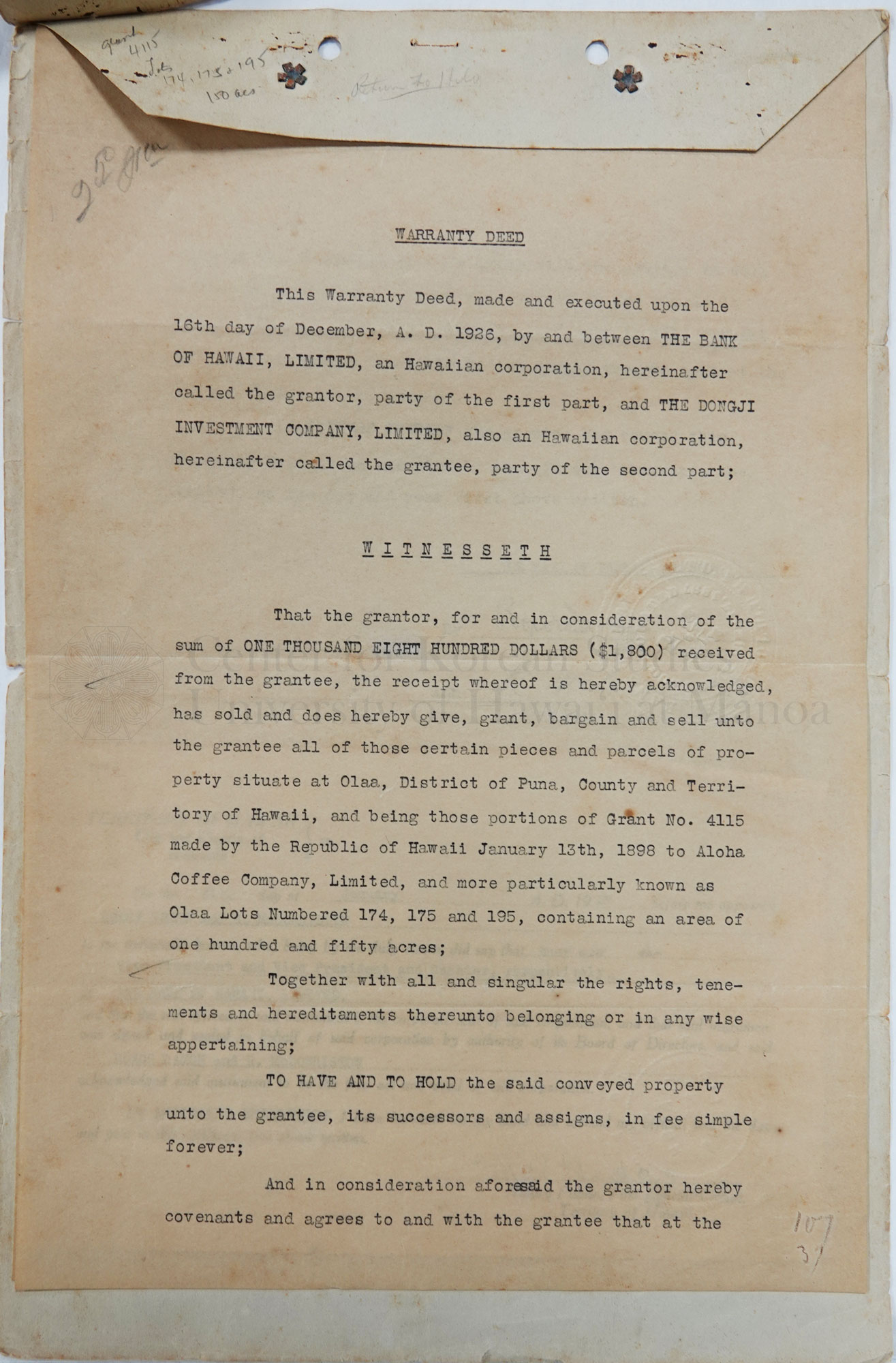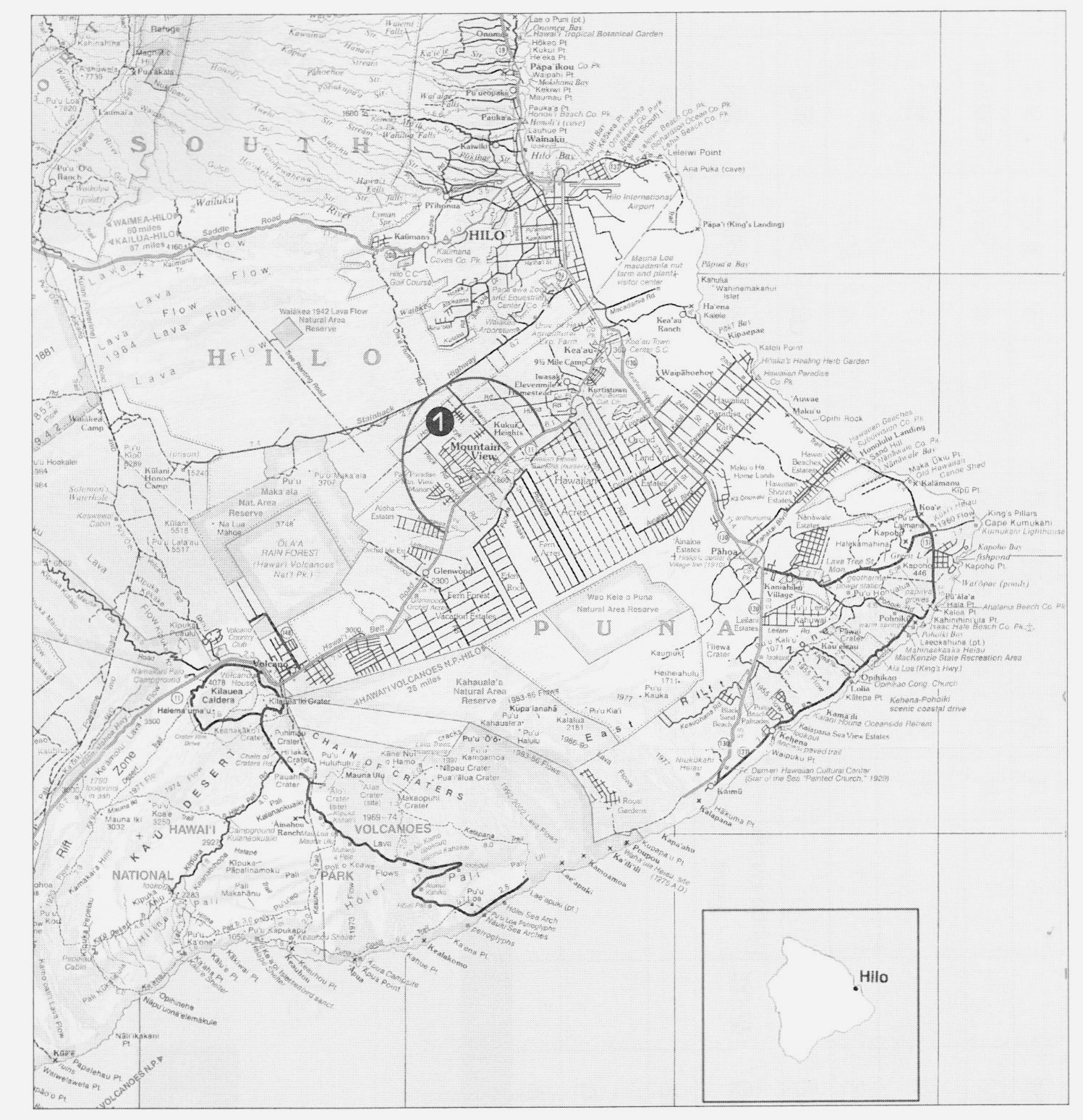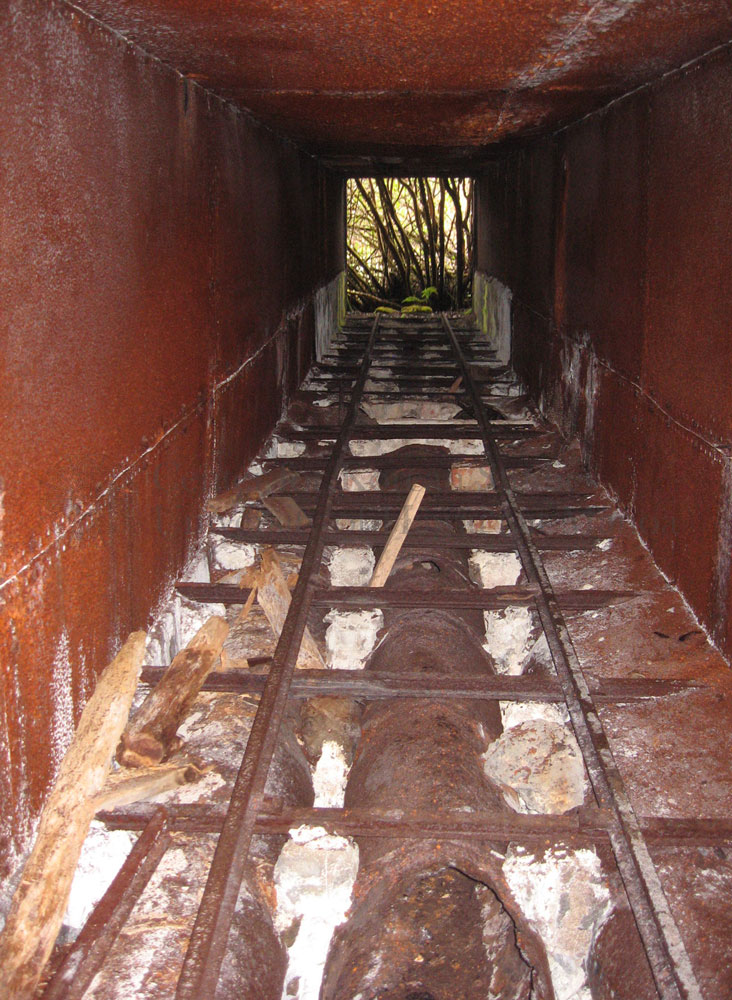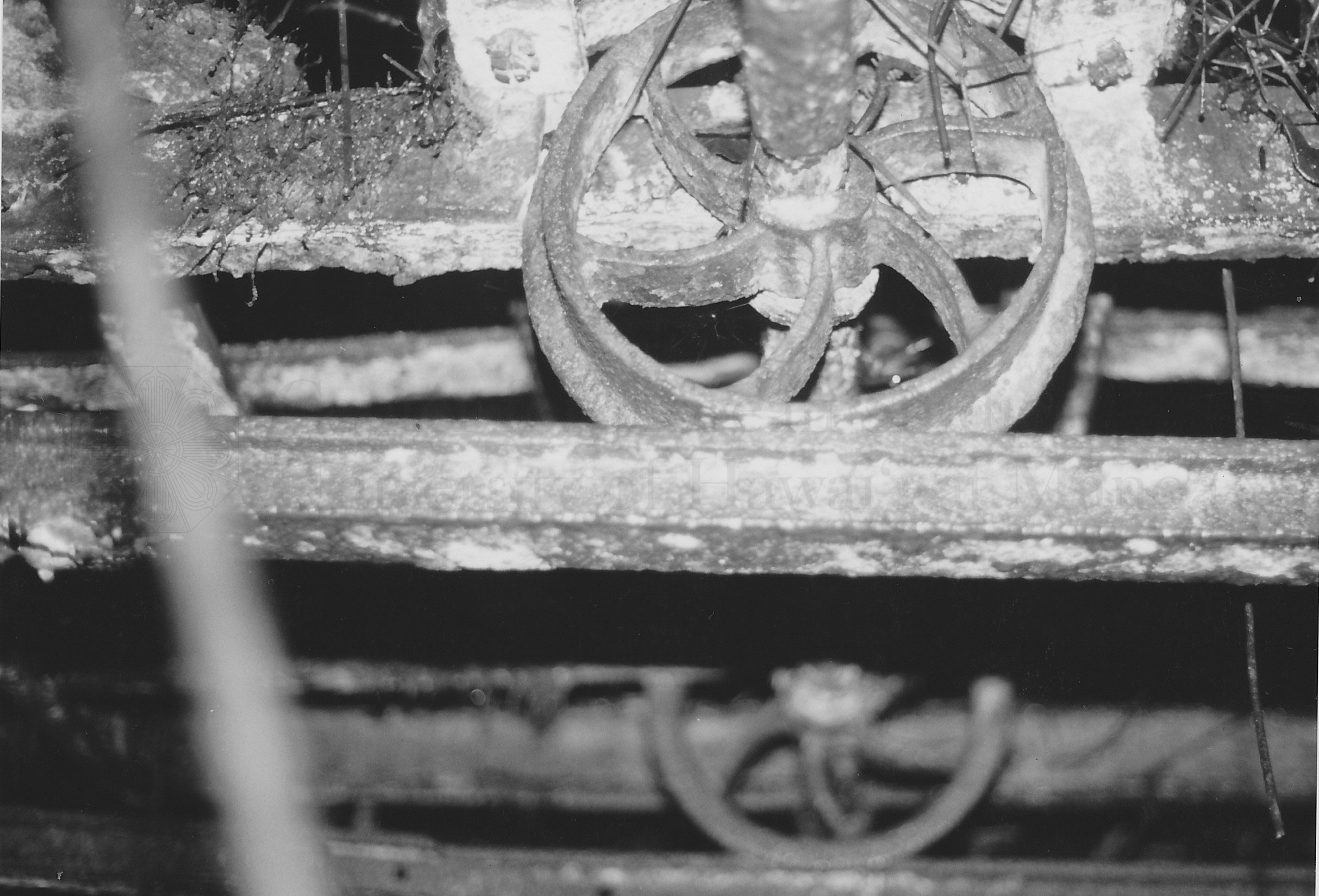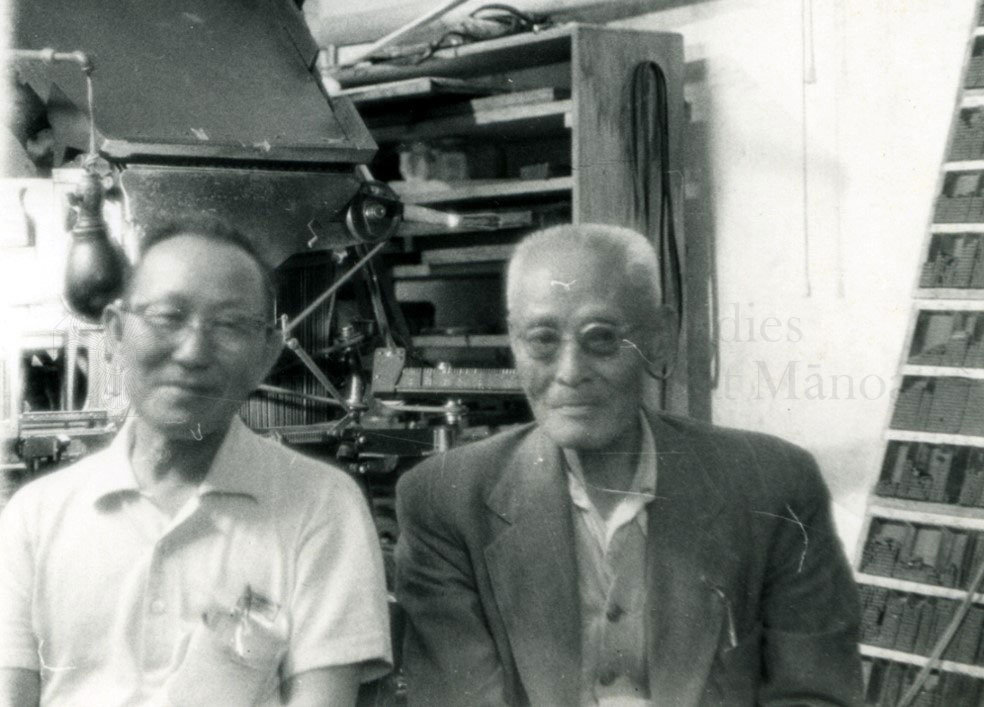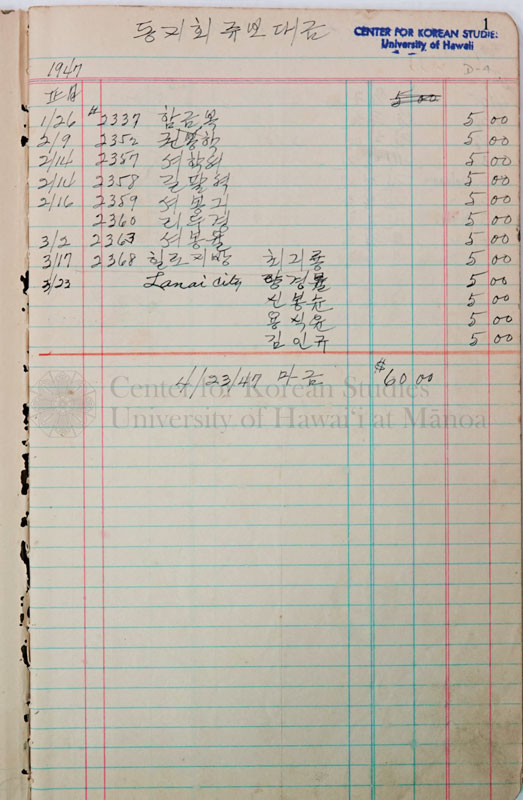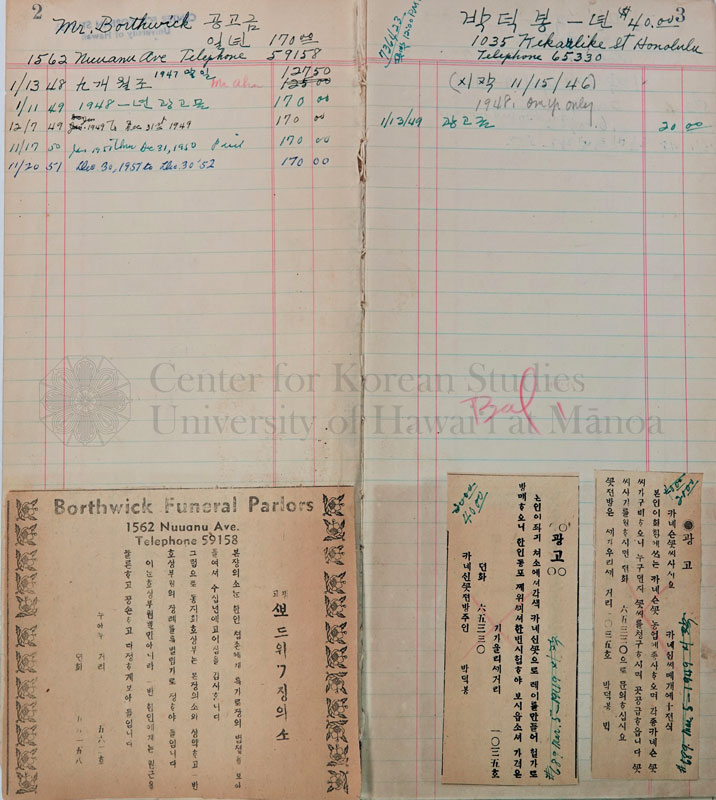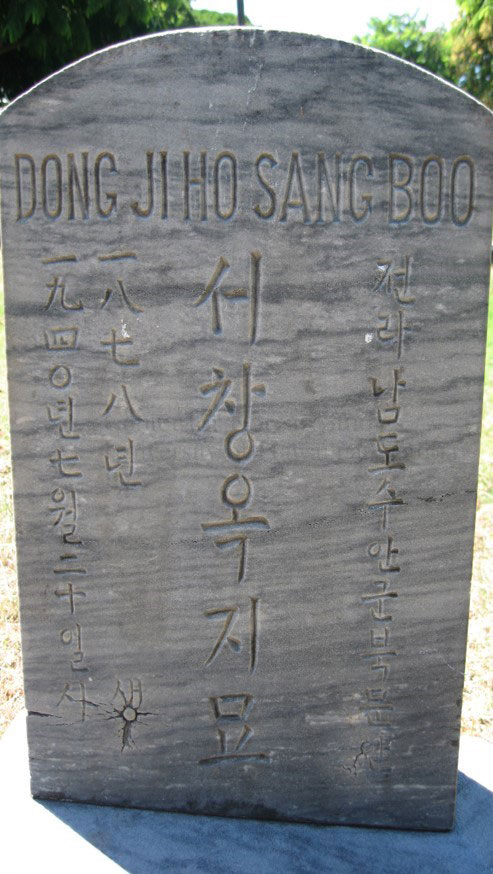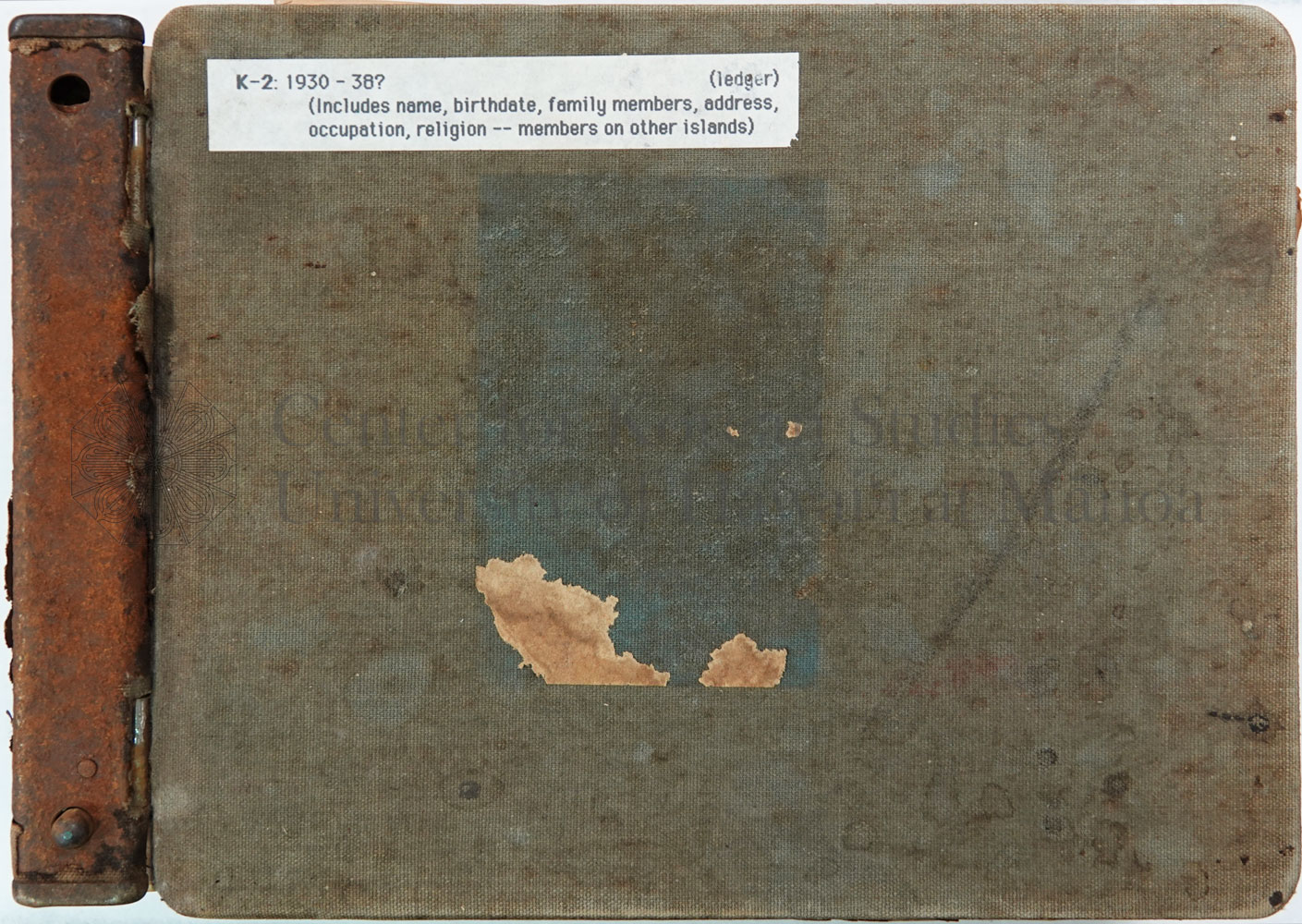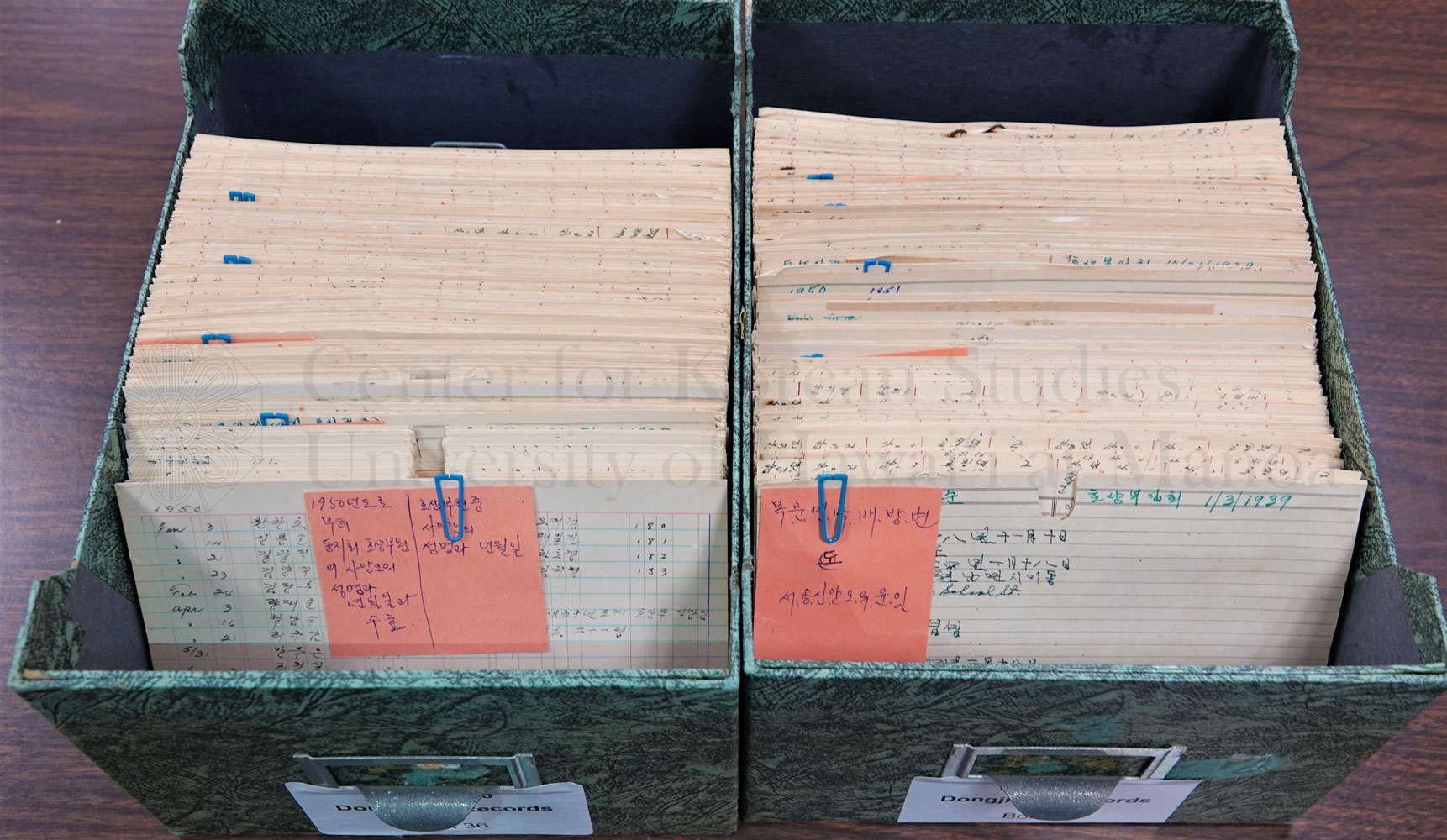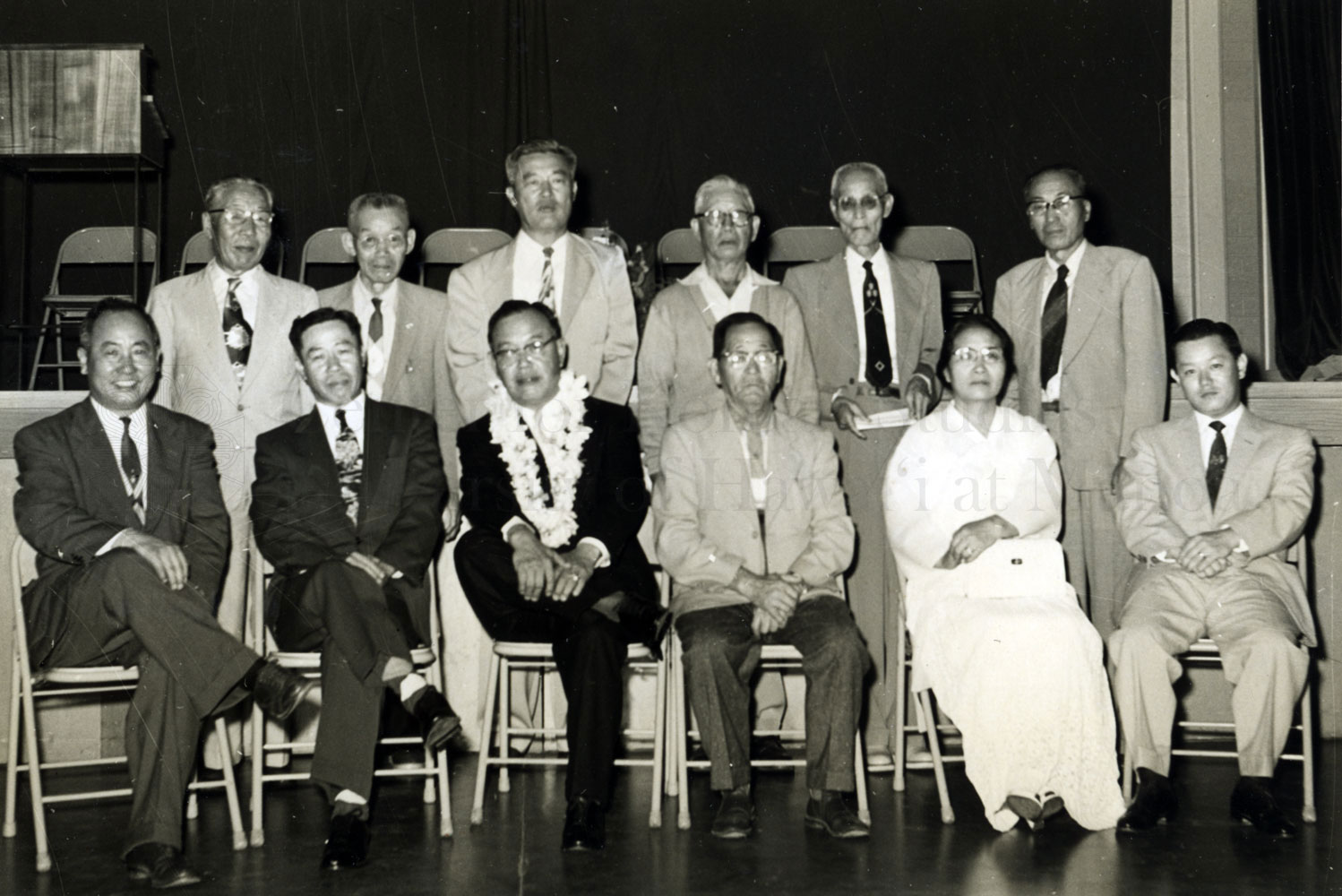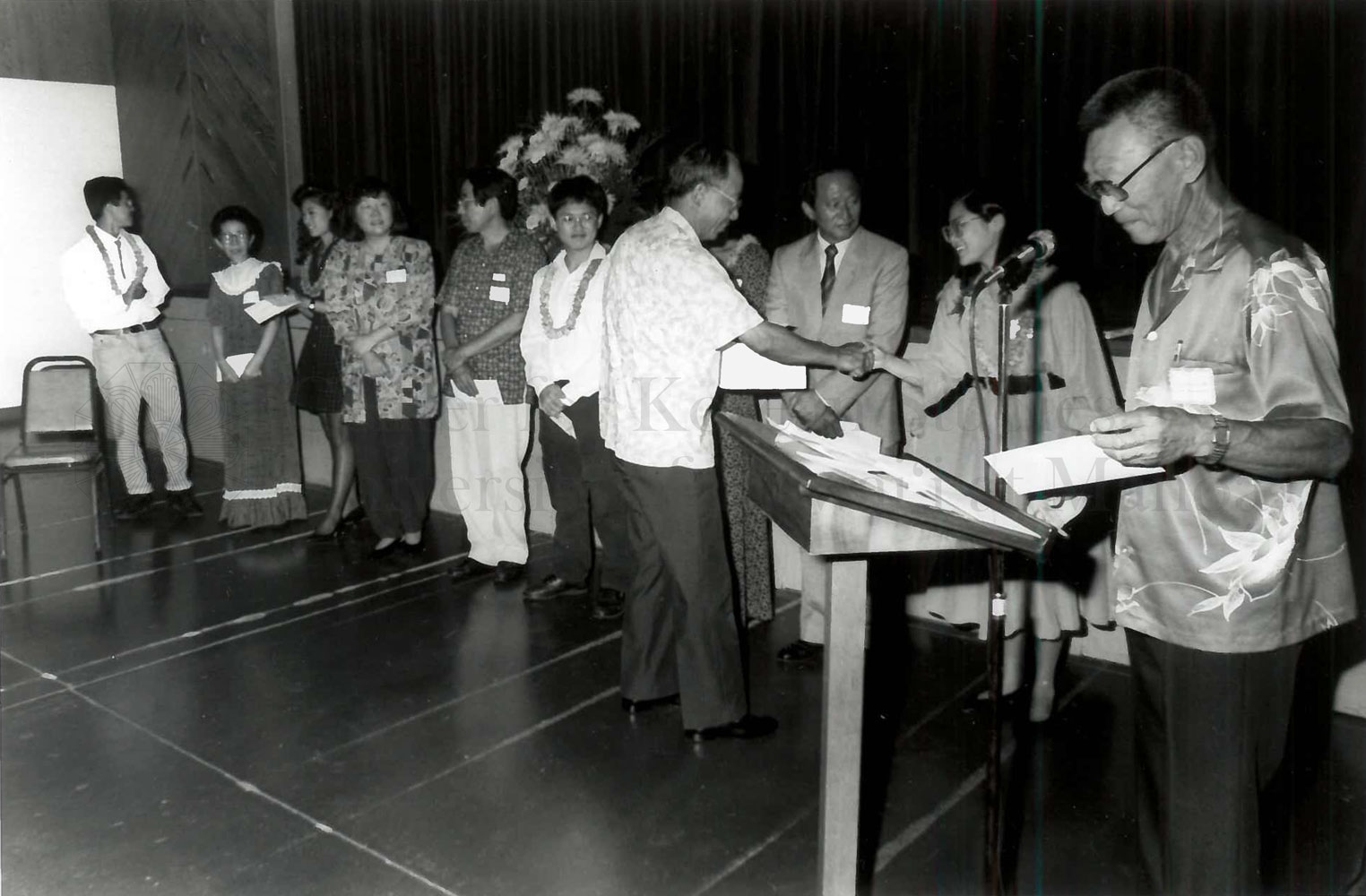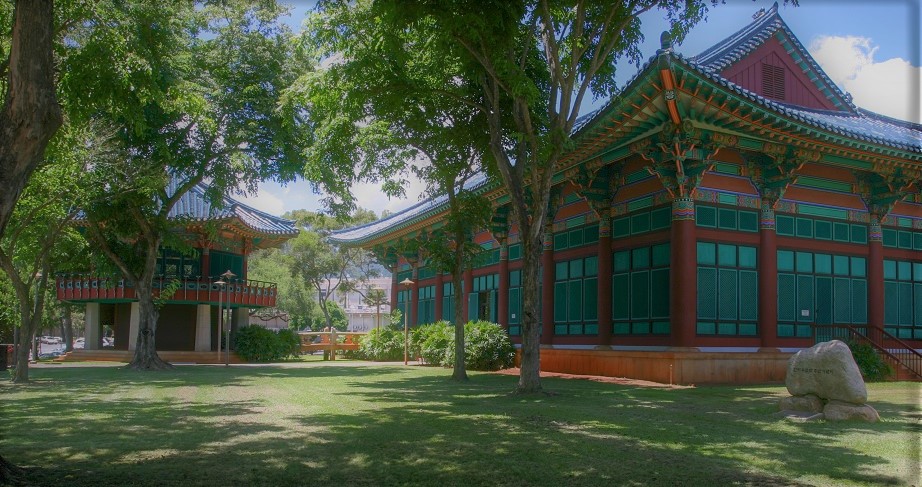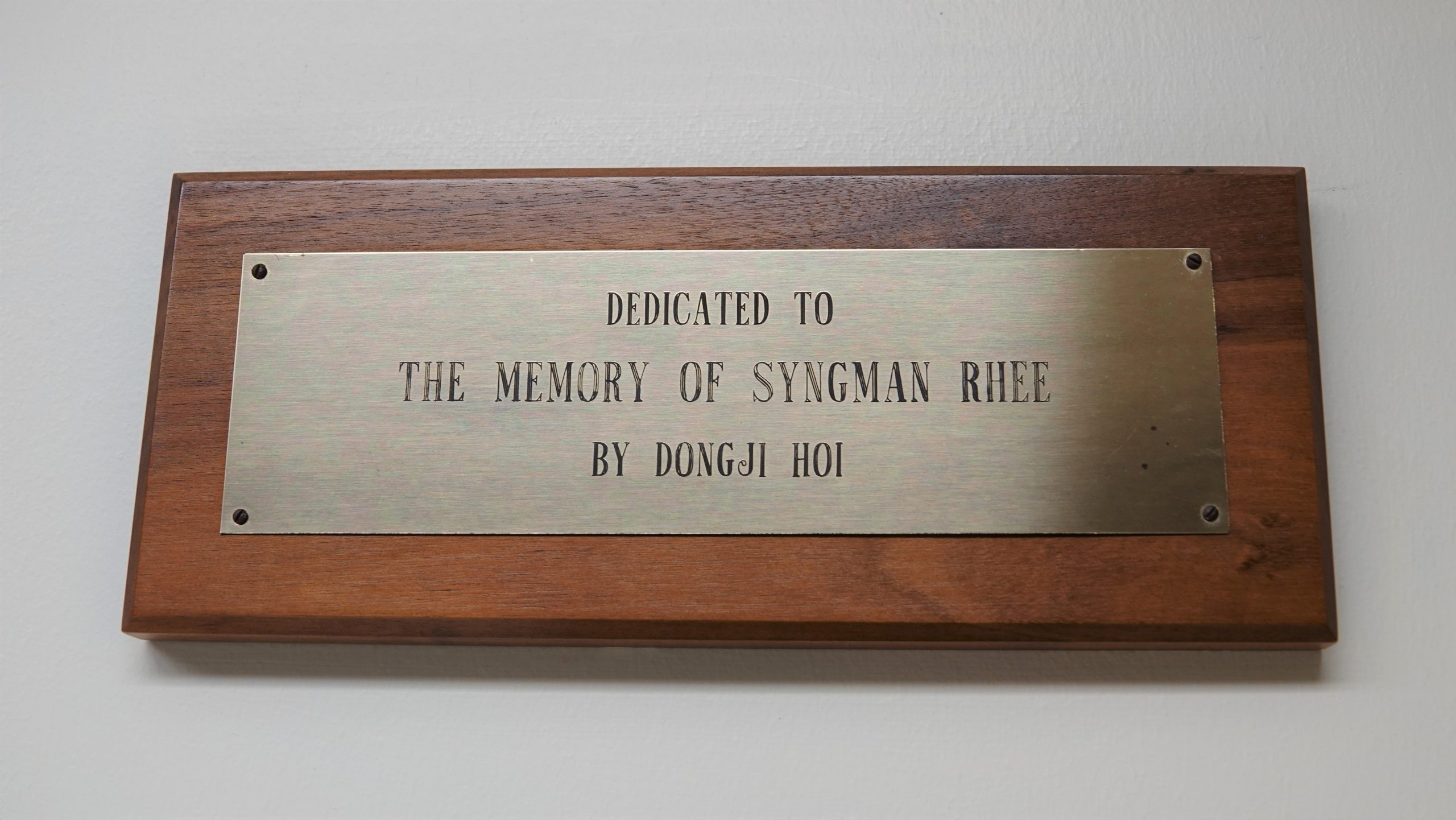Dongji Hoi 동지회
Dongji Hoi was established in July 1921 in Honolulu. Chan Ho Min (president of Taehaninkyomindan 대한인교민단, the Korean National Association 대한인국민회, 1921), Hyun Kyung Ahn (president of Korean National Association, 1917-1919) and Chong Kwan Lee (president of Korean National Association, 1919-1920) announced Dongji Hoi’s 15-section By-laws on July 14, 1921. They were close colleagues of Syngman Rhee. The By-laws state Dongji Hoi’s purposes as 1) to respectfully support the Korean Provisional Government; and 2) to promote the unification of Koreans (abroad).



In 1924, Syngman Rhee held a Korean Representatives Meeting in Honolulu 하와이한인대표회. The meeting was attended by representatives of 24 branches of Dongji Hoi as well as representatives of other organizations in Hawaii. At the meeting, Syngman Rhee was elected as Chairman 총재 of Dongji Hoi.
They also adopted the Three Great Principles of the Dongji Hoi 동지회 3대 정강:
- To achieve our great cause by upholding the principles of justice and humanity to the last moment and by reasserting the spirit of March First, through the acts of self-sacrifice as promulgated in the Declaration of Independence.
- Since concerted efforts are essential to success, let us keep ourselves strictly within the bounds of rules and regulations of the organizations and maintain order and follow instruction to the extent that there will be no act of discord among us.
- Economic freedom being the lifeline of the nation, let us make united efforts to achieve self-sufficiency.
In the beginning, Dongji Hoi established its office at the Korean National Association headquarters (1306 Miller Street) and had stayed there until 1928. Dongji Hoi moved to various places until 1942 when it was able to purchase a building at 931 North King Street. Dongji Hoi constructed a concrete building at the site in November 1949 and stayed there until it was sold in January 1970.
In order to fulfill its organizational purposes, Dongji Hoi established the Dongji Investment Company 동지식산회사 and issued a 100-dollar stock in January 1926. Though it was hoped to sell 700 shares, only $30,000 was collected. From the $30,000, Syngman Rhee spent $13,700 to purchase about 960 acres of forest of 'ohi'a trees in Olaa, 18 miles south of Hilo, and called this ‘Dongji Village 동지촌’.
Syngman Rhee wanted to clear the ohia forest and allow farming and ranching by Koreans who left sugar plantations due to their age. He envisioned that Koreans would prosper by farming their own pieces of land and eventually be able to support Dongji Hoi’s activities. Despite Rhee’s efforts to operate a charcoal kiln and lumber mill in the Dongji Village, the lack of capital prohibited him from reaching his goal. The Dongji Investment Company went bankrupt in April 1931 and the land was auctioned off in July 1933.
Syngman Rhee published the monthly, the Korean Pacific Magazine 태평양잡지 on September 30, 1913. The magazine became an official Dongji Hoi organ. It became the Korean Pacific Weekly 태평양주보 from December 1930. The weekly lasted until February 6, 1970.
The Korean Pacific Monthly and Weekly as well as the Korean National Herald 국민보 provided news items in the Korean language and helped to promote literacy of Korean immigrants in Hawaii.
Dongji Hoi also successfully carried on a social welfare program from June 1938 to take care of its members’ funeral services. After 20 years of immigration funerals of the elderly, especially for single men without families, became a social problem in the Korean community. In June 1938, Dongji Hoi created Hosangboo (Funeral committee) within its Relief Department. In the beginning, membership was limited to the dues-paying members of Dongji Hoi, but soon the program was open to the public. Hosangboo members paid a $1.00 annual membership fee and $0.50 for each member’s funeral. Funeral expenses were covered by the members fees and an increase of Hosangboo members helped Dongji Hoi’s financial situation. The 240-member in February 1939 was increased to 323 two months later and grew to 600 in June 1940.
Most of the tombstone inscriptions were written by Kim Chang Soo, a Dongji Hoi member.
The number of Dongji Hoi members fluctuated from time to time, but membership cards indicate the number to be over nine hundred from 1930 through 1938. By 1970, with its members aging and passing on, it was no longer able to carry on its activities.
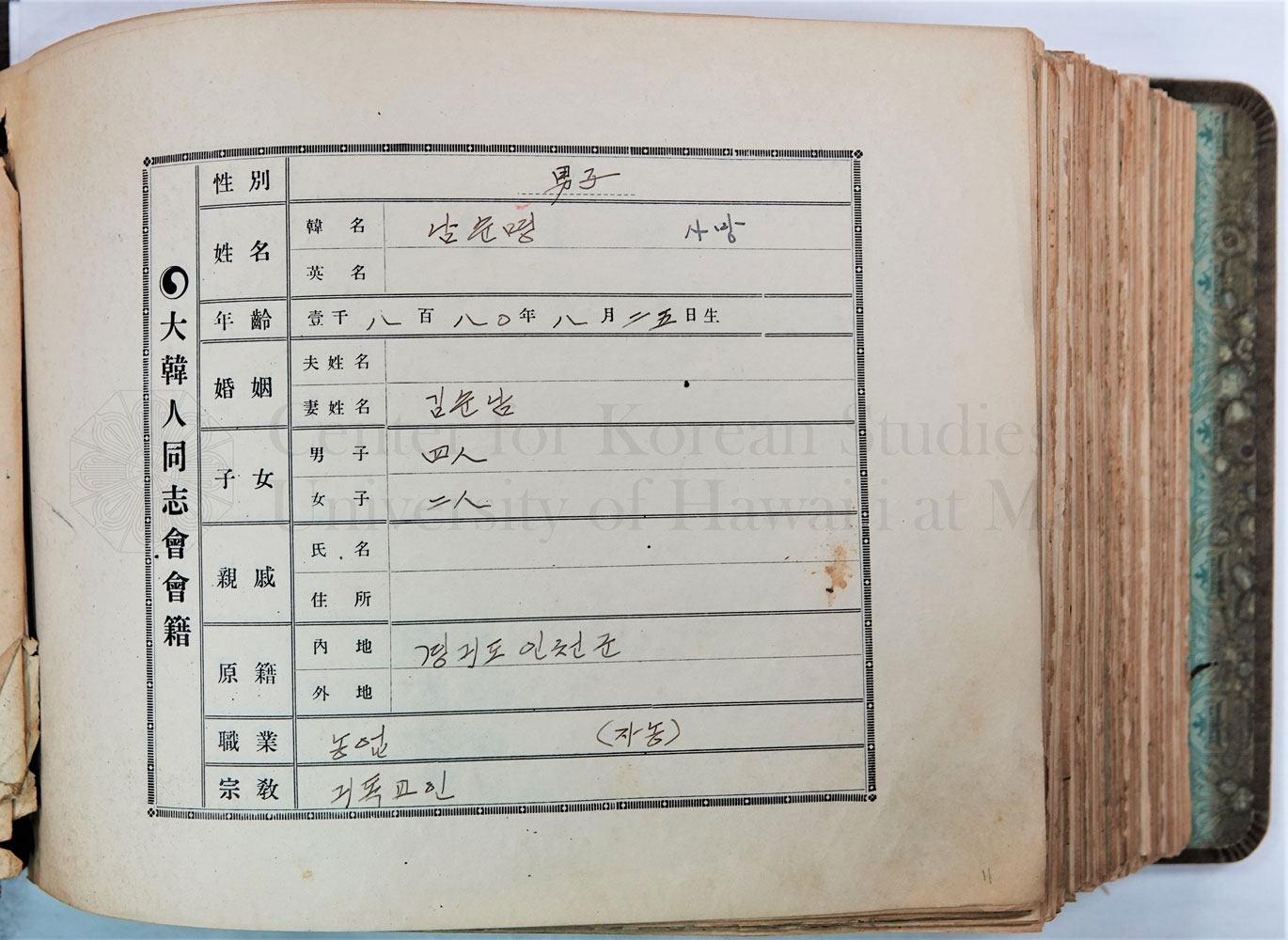
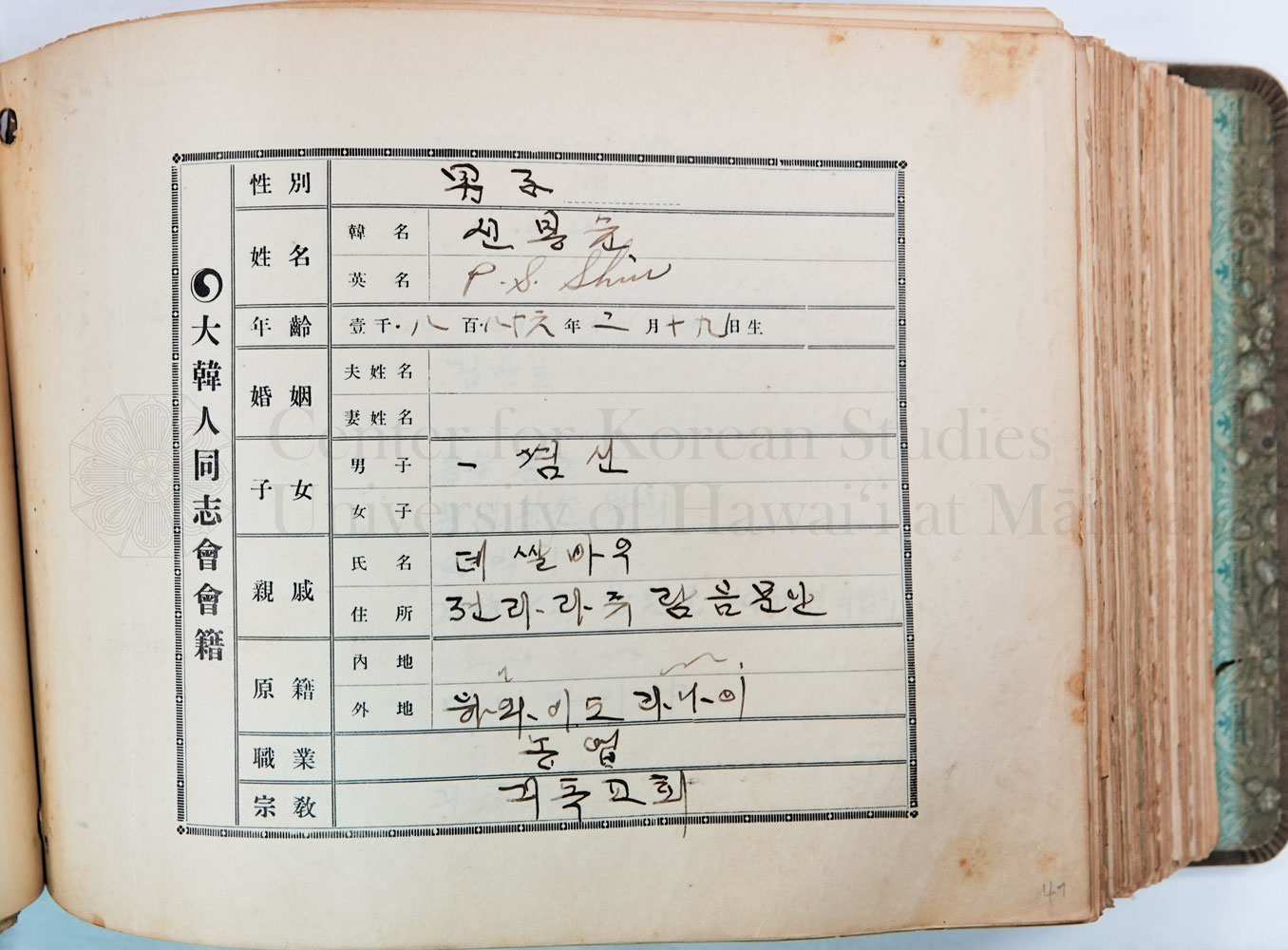
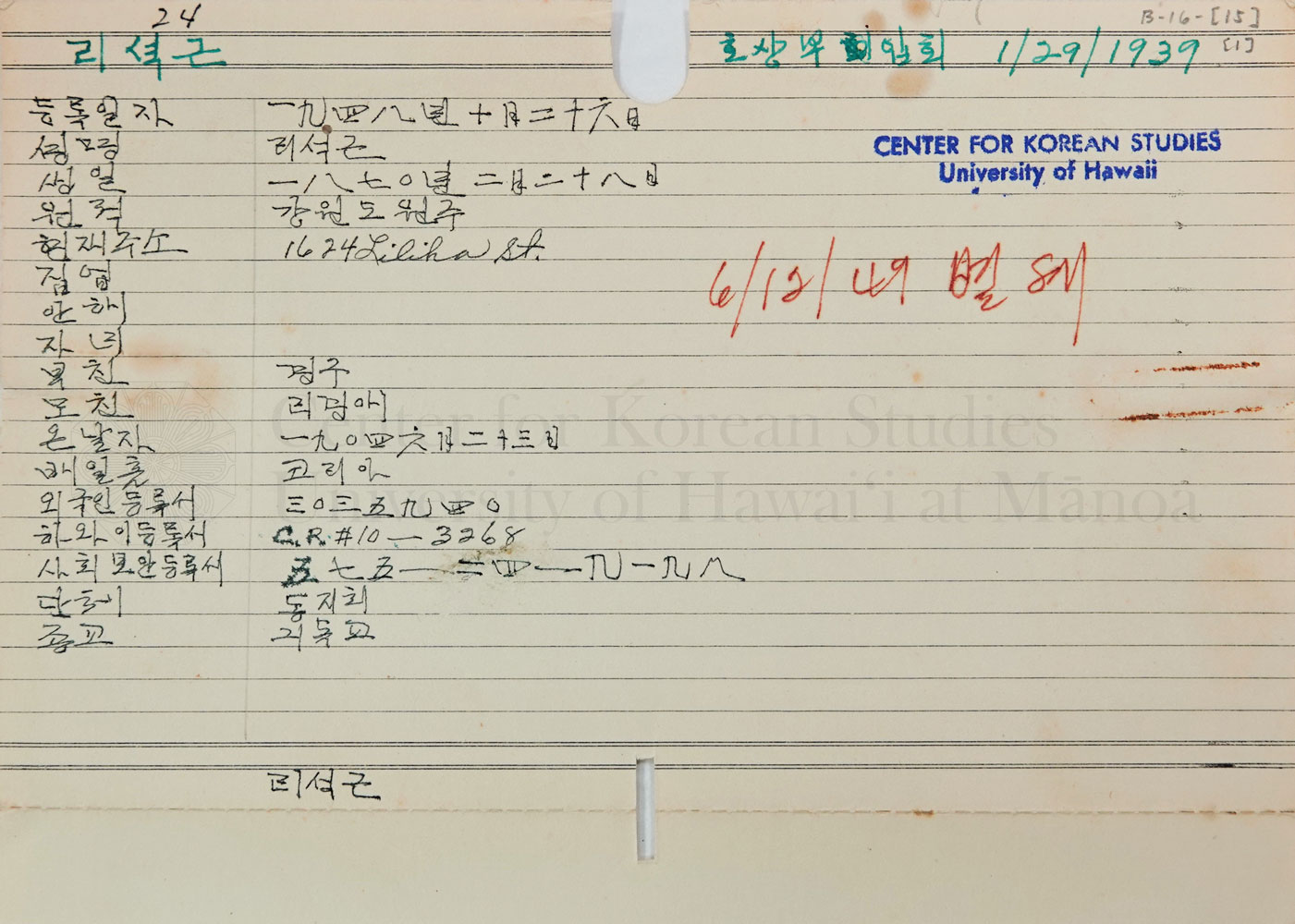
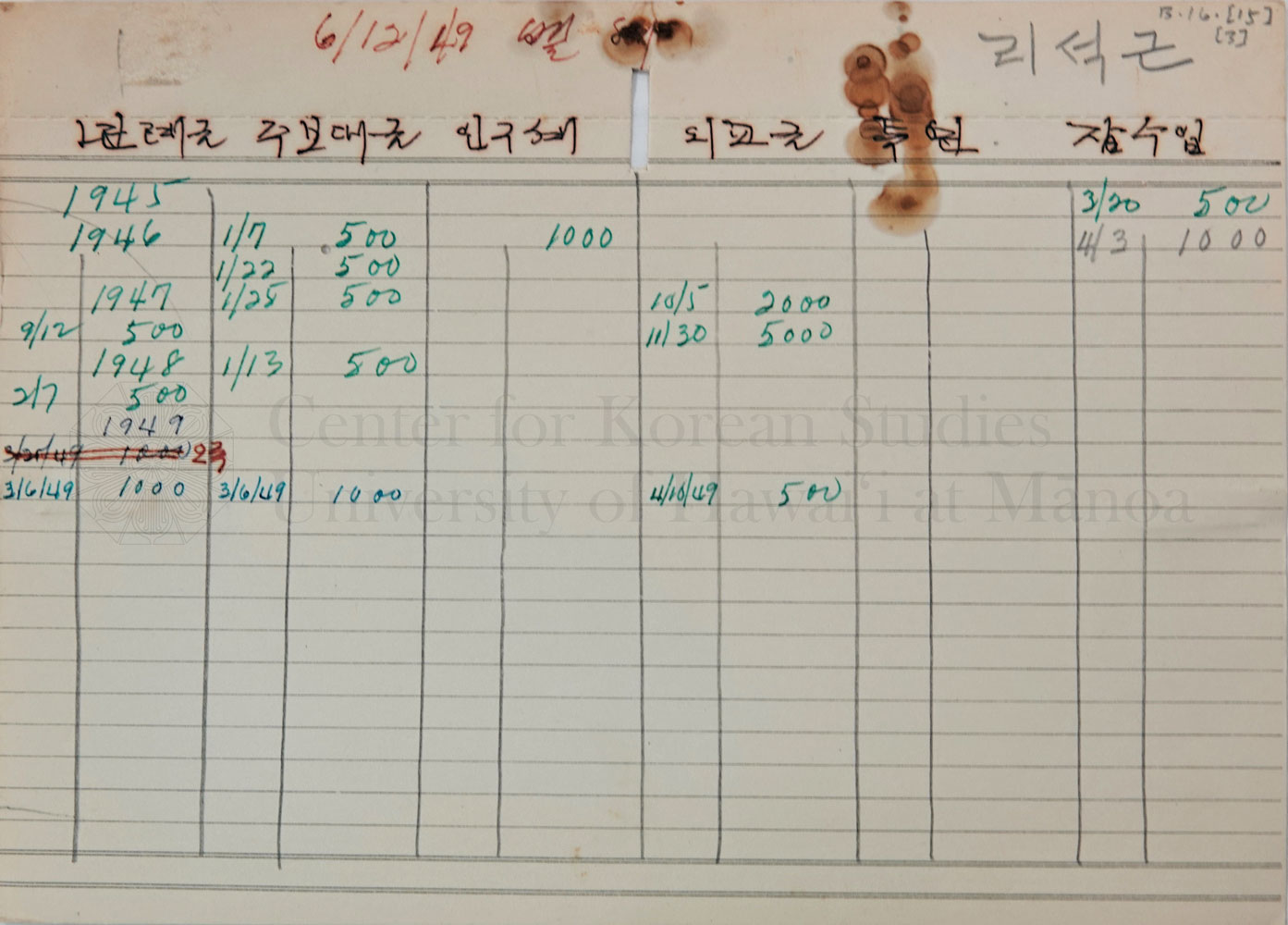
Dongji Hoi sold its headquarters in January 1970. It has been managing the funds from the sale as the Syngman Rhee Scholarship Fund. Since 1972, scholarships have been provided annually to Korean American students in Hawaii. Dongji Hoi contributed $10,000 towards building funds when the Center for Korean Studies University of Hawai‘i at Mānoa was constructed in 1980. Room 209 at the CKS holds a plaque, “Dedicated to the Memory of Syngman Rhee by Dongji Hoi”.
The 'Dongji Hoi Records' is one of the earliest collections on Korean diaspora deposited at the Center for Korean Studies. It consists of original documents of Dongji Hoi, including administrative records, meeting records, financial records, membership records, and photos. The records of the Dongji Investment Company and several subcommittees, such as the funeral committee, newspaper committee, and radio broadcasting committee, show many activities that Dongji Hoi carried on during its first 50-year history.
CKS also holds a collection of the Korean Pacific Weekly 태평양주보 from January 13, 1938 through February 6 or 1970. Dongji Hoi took over publication of the Korean Pacific Magazine 태평양잡지, which was started by Syngman Rhee in September 1913. Dongji Hoi changed it into weekly as the Korean Pacific Weekly 태평양주보 from December 13, 1930 until its last publication in February 1970.


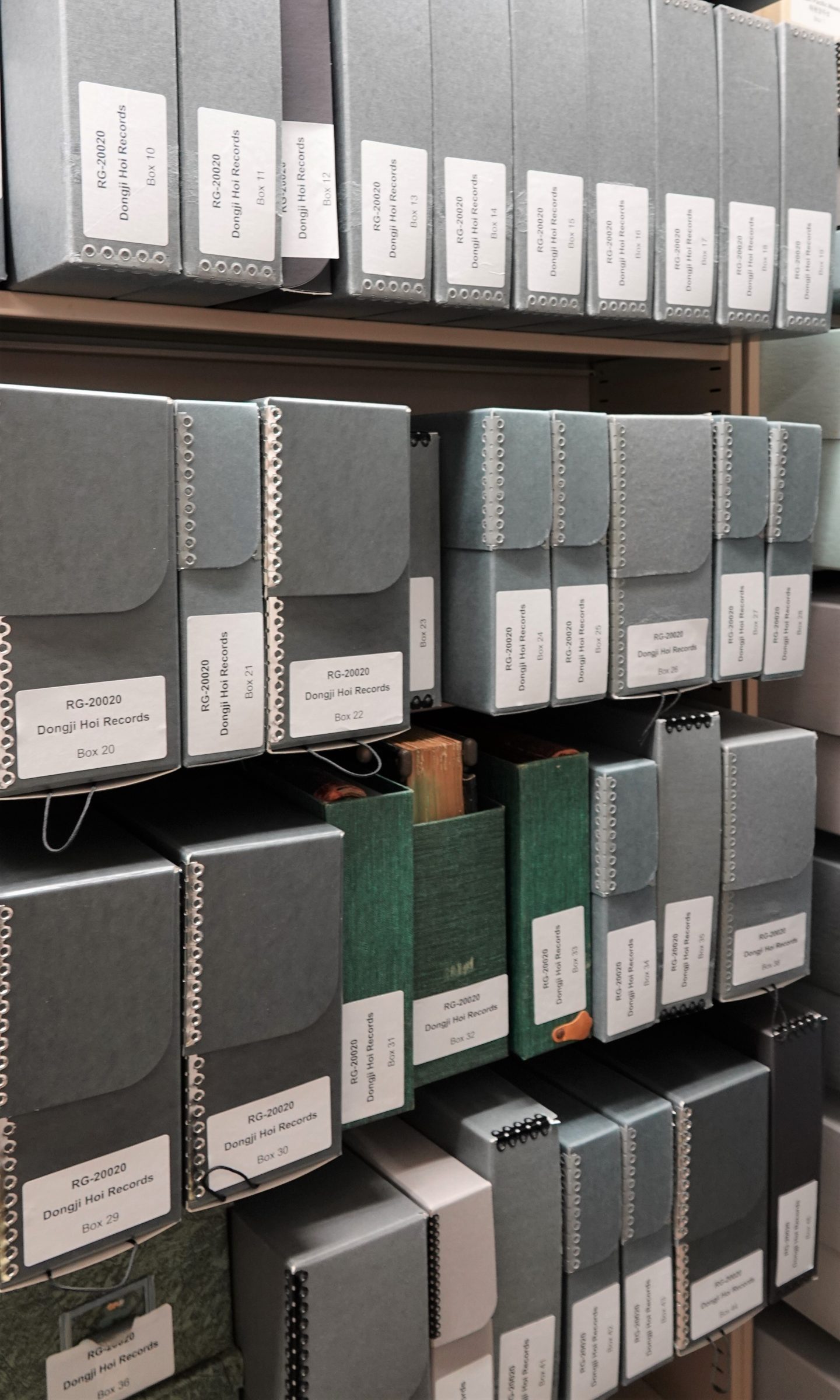
The exhibition was prepared by Do Young Park & Duk Hee Lee Murabayashi.
Reference
- Committee on the 90th Anniversary Celebration of Korean Immigration to Hawaii. (1994). Their footsteps: A pictorial History of Koreans in Hawaii since 1903. Seoul: Ye Sun Co., LTD.
- Dongji Hoi Records, Center for Korean Studies Library, University of Hawaii at Manoa.
- Duk Hee Lee Murabayashi Collection, Center for Korean Studies Library, University of Hawaii at Manoa.
- The Korean Pacific Weekly Collection, Center for Korean Studies Library, University of Hawaii at Manoa.
- 이덕희. (2008). 한인기독교회·한인기독학원·대한인동지회. 서울: 한국기독교역사연구소.
Donation
If you would like to make a donation, please click here. For specific use of the donation, please note it in the "Additional Donor Information/Special Instructions" section.

